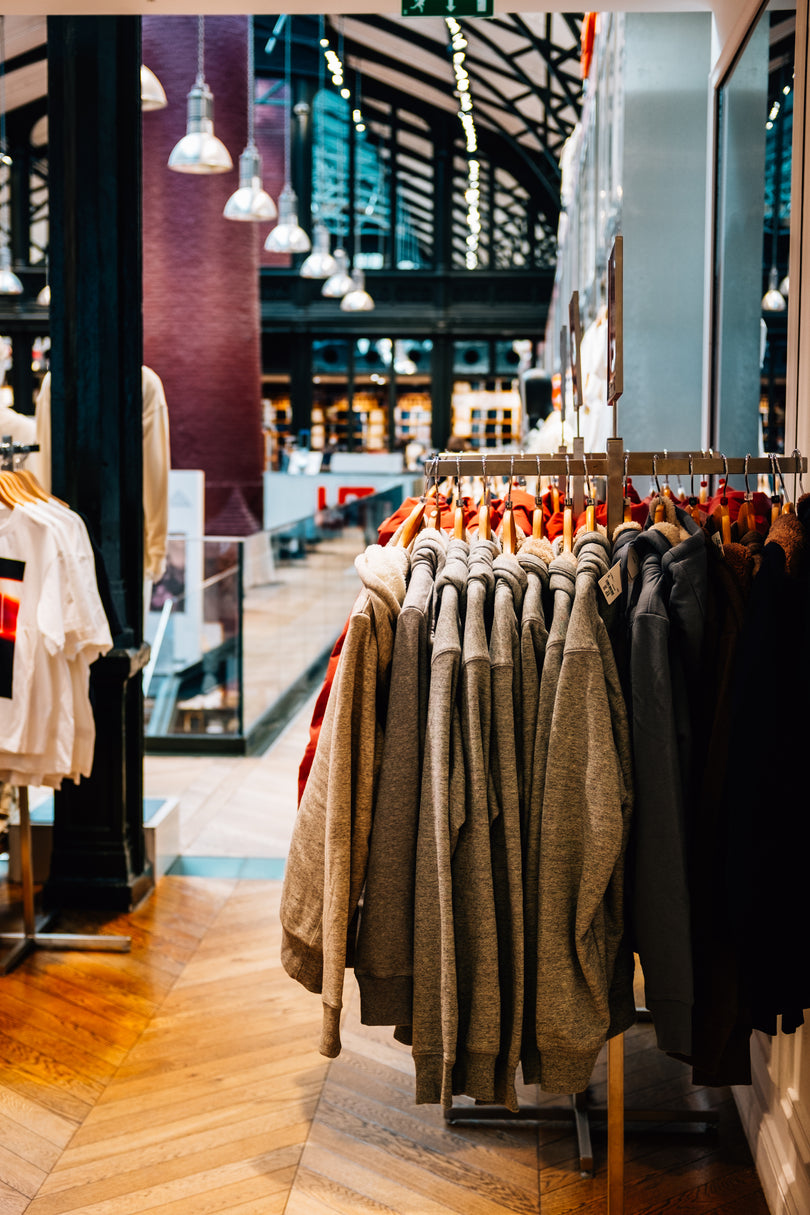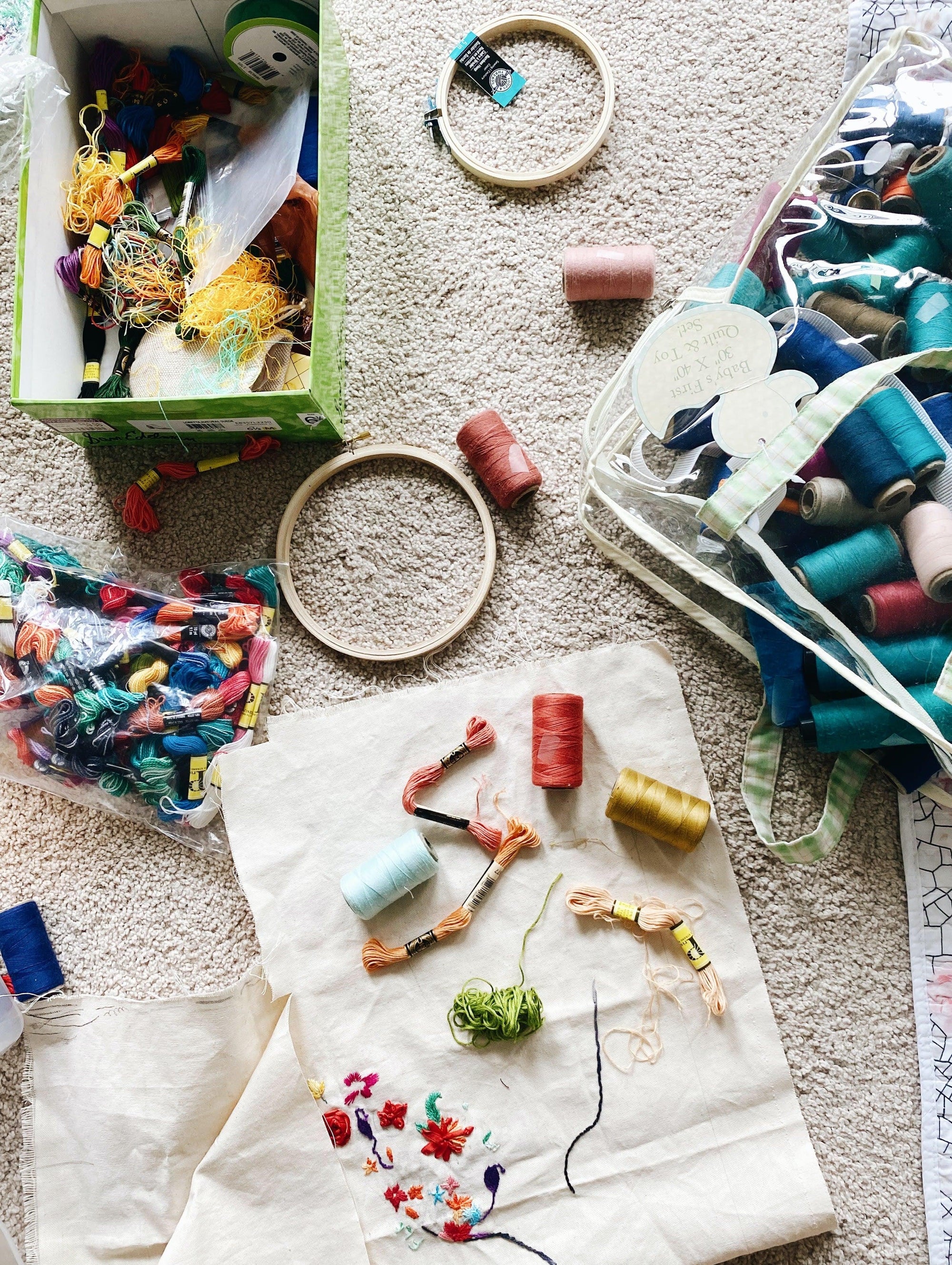To the untrained eye, sustainable fashion appears to have come a long way in recent years. You can walk into any fashion store, or more likely browse their website, and a whole host of ‘sustainable’ products will greet you. Even the most prominent fast fashion chains have their own ‘green’ collection of consciously made products, slotted in amongst the mountains of other styles, colours and trends available, boasting natural fibres and recycled materials. Brands bandy around terms like ‘eco-friendly’ and ‘recycled polyester’ with no hesitation and consumers are expected to lap it up without question.
In reality, sustainable fashion hasn’t become more mainstream, just easier to fake with greenwashing. Brands have noticed an increased interest in sustainability from their customers, and have quickly jumped on the trend like they would any other - and just like the clothes they produce, they’ve cut corners to produce it as quickly and cheaply as possible. According to the sustainable fashion glossary, guilty brands choose to communicate positive messages, “selectively, without the full disclosure of related issues.” Consumers are waking up to fashion greenwashing slowly, with a number of greenwashing examples being called out, but time is running out.
This decade is a turning point for the fashion industry, which must cut greenhouse gases in half by 2030, according to the United Nations. Part of the solution lies in the standardisation and regulation of sustainable fashion criteria, as without it we risk the danger of more than just greenwashing…
What are the dangers of unregulated sustainability?
Can anything really be labelled as greenwashing if sustainability has not been defined? For years fashion has warred over the precise definition of a sustainable brand, product or scheme, with some experts abandoning the term entirely for its frustrating ambiguity and many exploitative brands capitalising on the unclear parameters as a marketing loophole. The 2022 Fashion Transparency Index found that almost half of major brands (46%) publish targets on sustainable materials, yet just a third (37%) provide information on what constitutes a sustainable material.
With no regulated sustainable fashion criteria for many of the terms and credentials we rely on as consumers, we’re left with countless questions and no obvious answers: How can we know when we’re in danger of being greenwashed? What percentage of a garment has to be organic to label it as such? And who’s to say the material is organic anyway?
Take GOTS (Global Organic Textile Standard) Certified Cotton, a common certification used in the industry, as a shocking example of our lack of regulation. Much of fashion’s cotton supply comes from India, however, GOTS and Textile Exchange (a leading textile exchange) have admitted that they don’t perform inspections of the cotton they’re certifying themselves, trusting locals to assess and certify each farm instead who may only perform one planned inspections per year. In 2009, India’s agricultural export agency discovered wide-scale fraud in the country’s cotton belt, with entire villages certifying genetically modified cotton as organic. Yet, we still see brands proudly displaying their GOTS Organic Cotton t-shirts at three or four times the price of regular cotton garments. How are consumers to know the difference, when the issue has deliberately been kept out of the public eye?
Even if the sustainable credentials are legitimate, there can be further problems regarding marketing. Many of us rely on clothing tags to tell us this key information about the product, especially when shopping in person. But these can be a greenwashing minefield with ambiguous or misleading labels; such as claiming to use ‘eco-friendly’ or ‘recycled’ materials without specifying the exact materials used, where they came from or what % they make up of the garment.
The up-cycling trend is similarly proving to be a tricky one for many brands. A series of lawsuits have cropped up with some brands suing others for not being “materially different from the original product,” suggesting the need for concrete guidelines of when a brand can be considered sufficiently up-cycled or not.
Without regulation, we can have no transparency or accountability for brands’ harmful practices and false promises. Without laws in place to promote sustainability, the fashion industry has no hope of meaningful change, but accountability is only the first step of the journey.
Will legislation make any difference?
In the past two years, a slew of proposed sustainable fashion laws have cropped up, widely ranging in both severity and territorial jurisdiction. Case in point; France's recent anti-waste law bans the destruction of unsold clothes, with the threat of fines of up to 15,000 euros. Whilst this bill would only apply to goods sold in French territory, an EU-wide law has also been proposed; The European Green Deal aims to regulate product production and labelling, so “consumers are better informed about the environmental sustainability of products and better protected against greenwashing.” The deal also insists that textiles sold in Europe must be longer-lasting and easier to repair.
The New York Fashion Act might have the most geographically-limited regulation, but it still aims to force companies operating in the city with an annual global revenue of $100million or more into line - which would cause ripples across the entire industry. Brands will have to disclose their greenhouse gas emissions and energy and water usage, as well as set and achieve Science Based Targets for reducing their impact (among other things).
The legislative focus is not just on garments, but also on the most vulnerable members of the supply chain responsible for making them. The Garment Worker Protection Act passed in California last year was quickly followed by Fashion Revolution’s 2022 campaign ‘Good Clothes, Fair Pay’, both of which aim to increase worker’s rights to better pay and brands’ accountability across their supply chain.
An exciting solution may be reached, in the form of digital clothing labels referred to as ‘product passports’. What materials have been used, how products are made, and whether people involved in the process are treated fairly – all the questions consumers have, brands can answer digitally. They can offer a “more detailed and permanent record than traditional sewn-on labels”, breaking down barriers to transparency.
How do we fix fashion’s problems?
Transparency is our key to change. As the industry becomes better regulated and brands are held accountable for their impacts, growth is inevitable and fashion is a step closer to becoming a sustainable, circular economy.
However, regulation can only go so far, and it often intersects with public pressure in more ways than one. Brands are forced to pay attention to what shoppers want if they hope to remain profitable, which is why they rely on greenwashing and clever advertising to dupe consumers into believing they’re more sustainable than they are. With laws in place to end greenwashing, brands will be forced to change their ways or see a slow decline as shoppers turn to sustainable alternatives. Likewise, lawmakers are influenced by the feelings and beliefs of their constituents, so the more we demand change the likelier it is to happen. We can show support by campaigning (see these tips for taking action) and getting behind proposed legislation that requires public backing, such as Fashion Revolution’s ‘Good Clothes, Fair Pay’ campaign, which needs 1 million signatures - so go sign!
As individuals, it can be our smallest actions that make the biggest change. Get behind the sustainable fashion movement by educating yourself, easing yourself into the sustainable fashion mindset with easy tips, and prolonging the life of your clothes once you’ve finished with them.




